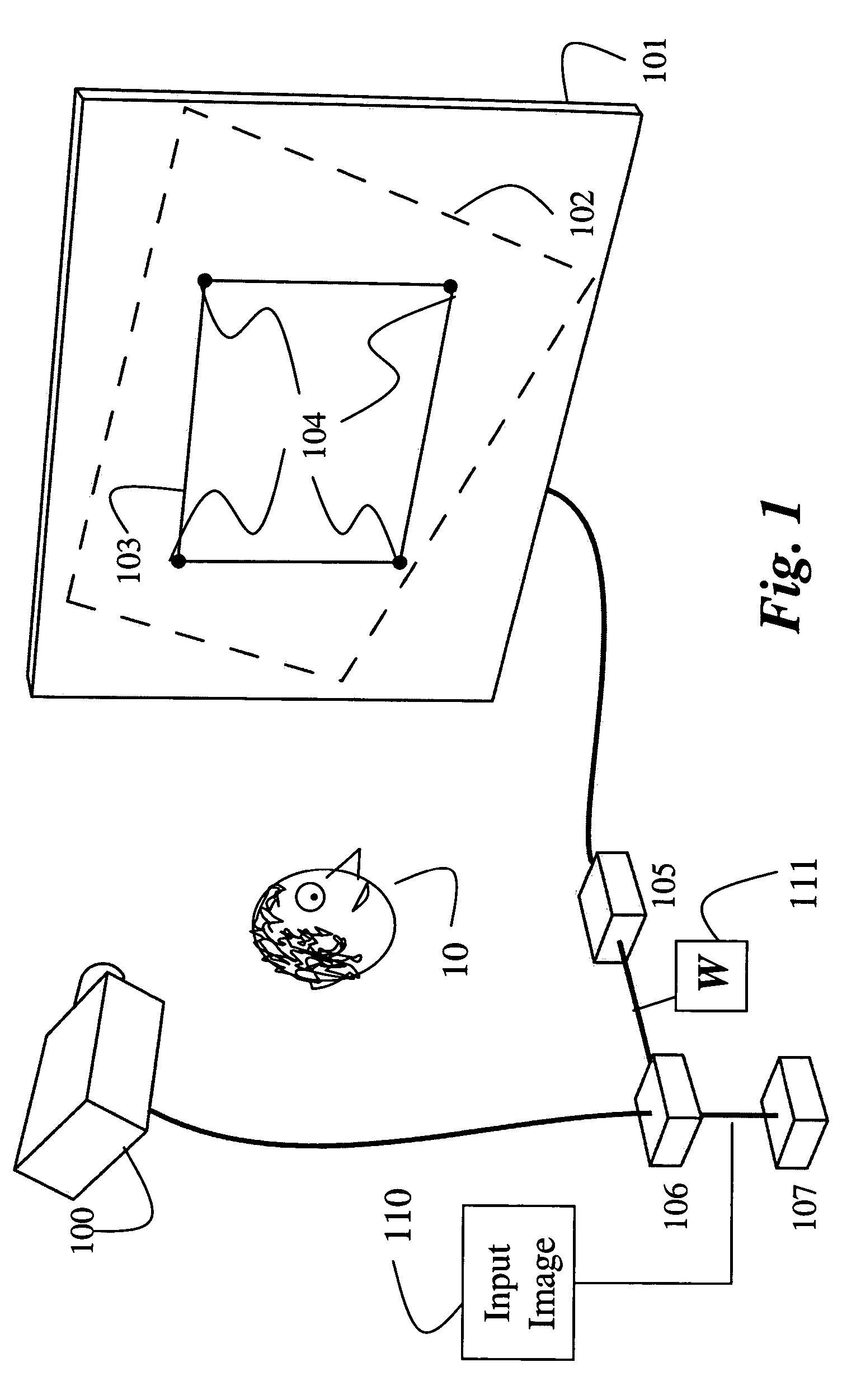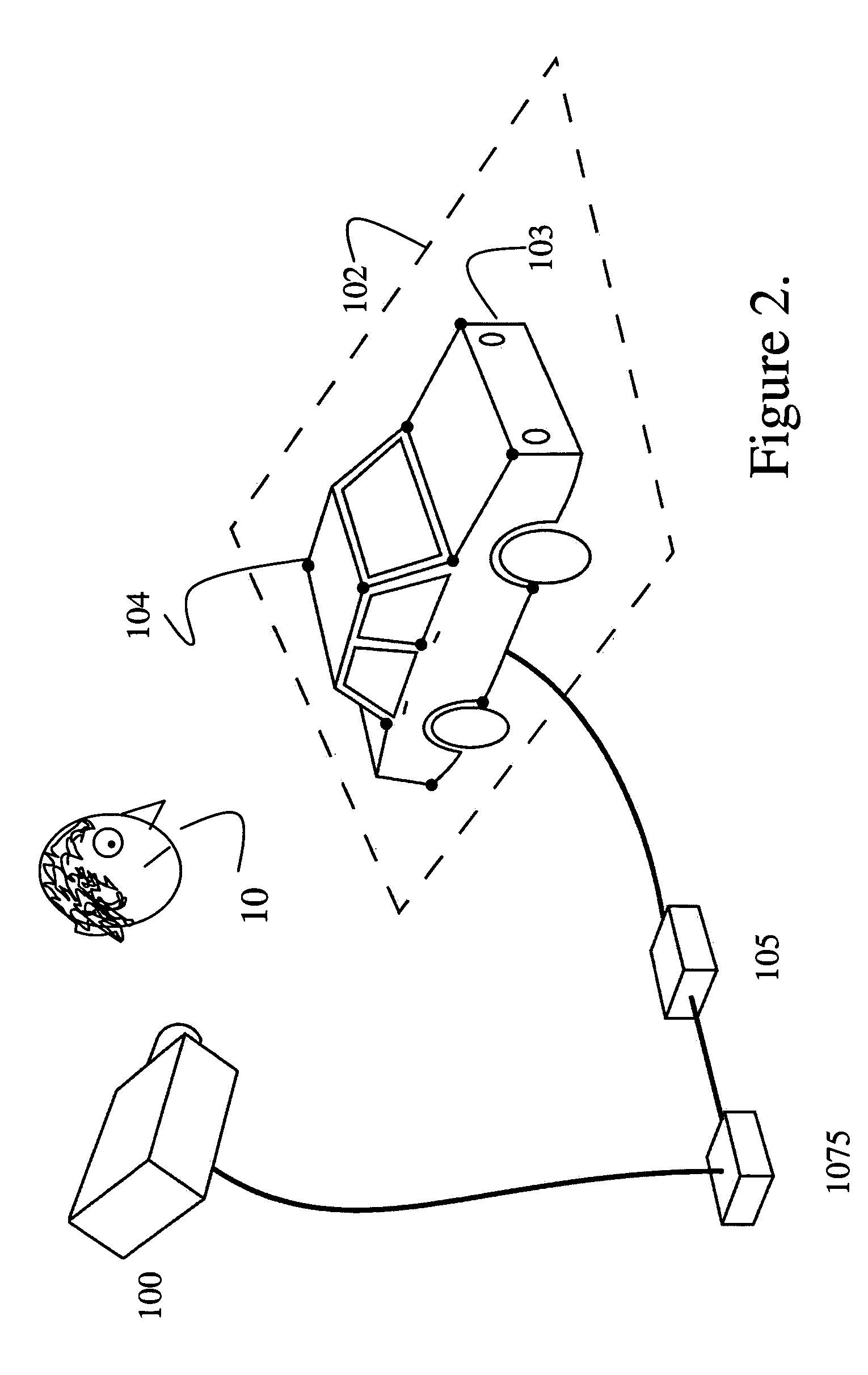Method and system for calibrating projectors to arbitrarily shaped surfaces with discrete optical sensors mounted at the surfaces
a technology of optical sensors and projectors, applied in the field of calibration of projectors to display surfaces, can solve the problems of additional complications and difficulty in determining the correspondence between camera pixels and projector pixels
- Summary
- Abstract
- Description
- Claims
- Application Information
AI Technical Summary
Problems solved by technology
Method used
Image
Examples
Embodiment Construction
System Structure
[0020]As shown in FIG. 1, a projector 100 is casually aligned with a planar display surface 101. Here, the viewer 10 and the projector 100 are on the same side of the display surface 101. Therefore, the projected images are reflected by the display surface to the viewer. Because of the casual alignment, an output image or video 102 of the projector may not coincide perfectly with a desired image area 103 of the display surface. Therefore, it is necessary to distort an input image 110 so that it conforms to the image area 103 when projected as the output image.
[0021]Therefore, the display surface 101 includes four locations 104 with known coordinates, either in 2D or 3D. It should be noted that additional locations could be used depending on a size and topology of the surface 101. Four is a minimum number of locations required to fit the output image to the rectangular image area 103 for an arbitrary projection angle and a planar display surface.
[0022]Optical sensors ...
PUM
 Login to View More
Login to View More Abstract
Description
Claims
Application Information
 Login to View More
Login to View More - R&D
- Intellectual Property
- Life Sciences
- Materials
- Tech Scout
- Unparalleled Data Quality
- Higher Quality Content
- 60% Fewer Hallucinations
Browse by: Latest US Patents, China's latest patents, Technical Efficacy Thesaurus, Application Domain, Technology Topic, Popular Technical Reports.
© 2025 PatSnap. All rights reserved.Legal|Privacy policy|Modern Slavery Act Transparency Statement|Sitemap|About US| Contact US: help@patsnap.com



